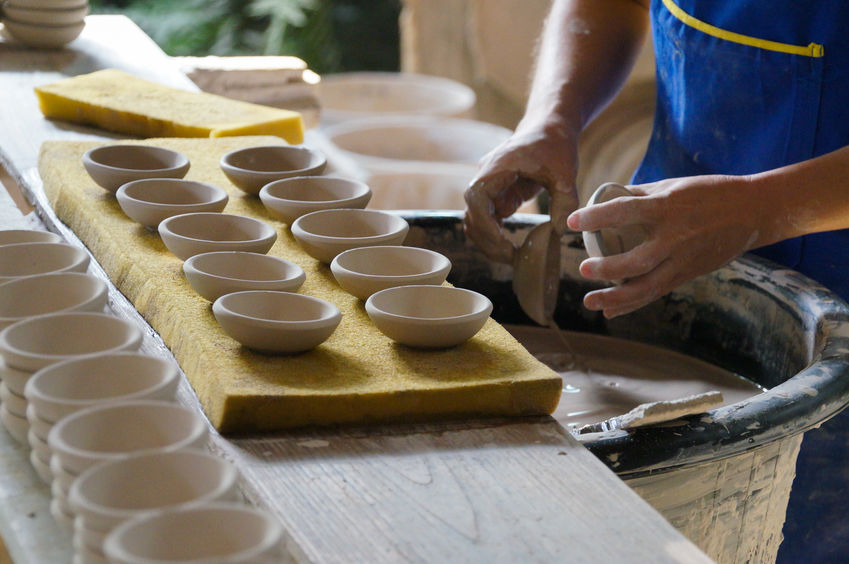Podcast: Play in new window | Download

Put a pin in it!
Pin holing issues can be frustrating and can seem like a mystery to solve. In todays episode we are going to look at the most common issues. However, we will be confining our conversation to the commercial side of things. In other words, if you are buying your clay and glazes stay with us because we are talking about you. There are three problem areas we are going to consider in todays talk: The Clay Body, Your Glaze Application, and Firing.
First, let’s get a few definitions out of the way. Pin Holing – . Blistering – .
The Clay Body
Take a test. I know we all want to jump right in without reading directions or testing our process, but testing your clay body with your glazes can go a long way towards eliminating frustration.
Many wheel thrown surfaces will pin holing, but can easily be remedied. Have you ever noticed that the pin holes are forming around the trimmed areas? Many times, potters will inadvertent drag aggregate to the surface that will later come back to haunt them. Avoid overusing your sponge at the end of throwing. When trimming, use your finger or the blunt surface of your rib to smooth out your finished ware.
Your Glaze application
- Too Thin – Glazes that are applied too thin won’t allow for healing. Outgassing must come to the surface, and there has to be enough glaze product to heal over the outgassing.
- Too Think – Too think an application and nothing can surface to the top.
- Dirty Surface – Make sure you are rinsing off your wares after the bisque firing.
- Pre-Wet – If you see small pin holes developing while glazing you may want to pre-wet your piece. Also, finger polishing those areas can help to smooth things out.
Firing
- Bisque temp – A higher bisque temp can help. Of Couse it comes with it own complications because now you have a harder ware that will soak up less glaze. A few tests can help you find your happy place.
- Slow things down – in general, a slower firing is going to yield better results
- Drop and hold – Many potters hold at the high end. Try dropping 100 degrees and hold for 30-45 minutes.
- Air Flow – Gas kilns benefit from a natural heat work convection. However, kiln vents have leveled the playing field and can be added for around $350.00. Considering that a gallon of glaze is $70, this may prove to be money well spent.


